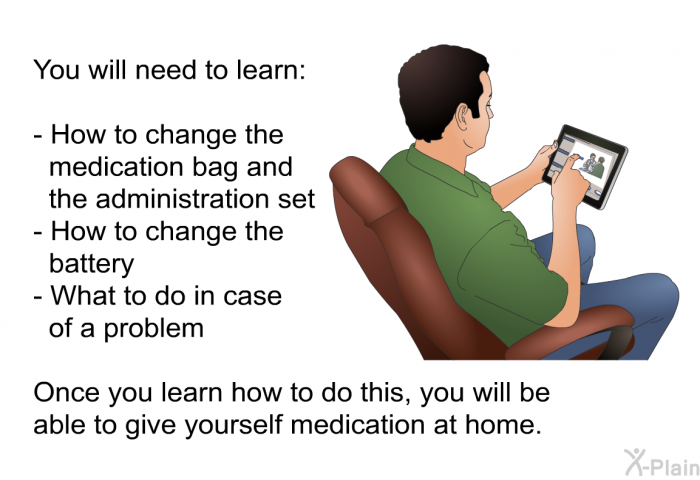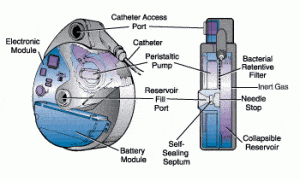

Alternative routes of methadone administration are therefore needed and there is a need for further exploration of the effects, and possible adverse effects, of CSCI in this patient group. The addition of methadone is reported to improve pain relief in complex pain situations but, so far, only peroral or intermittent parenteral administration of low-dose add-on methadone has been studied, routes that are often not feasible in the imminently dying patient. Low-dose add-on peroral methadone in combination with other opioids for pain is proposed to be a useful alternative to methadone therapy for better pain control at the end of life. However, despite encouraging data in palliative care in earlier phases, there is a lack of prospective studies on the use of CSCI in the imminently dying. Thus, there is no need for an intravenous access.
#CADD PAIN PUMP PORTABLE#
The use of an ambulatory infusion pump (AIP), a small, portable pump that delivers medication via a thin subcutaneous catheter, has several advantages for pain control: It ensures a steady infusion of drugs, with reliable absorption if inserted in unaffected tissue, and allows combinations of drugs to be administered parenterally in a manner that is more convenient than repeated and painful injections. However, with progressive deterioration at the end of life, continuous subcutaneous infusions (CSCI) become increasingly important to continue pain control in the dying. Especially, cancer patients in palliative care are adequately treated with low or moderate doses of opioids and only about 10 % need daily morphine doses over 600 mg. A better understanding of pain mechanisms has improved pain therapy in recent years. Eighty percent of patients with advanced cancer and 67% of patients with cardiovascular disease or chronic obstructive pulmonary disease will experience moderate to severe pain at the end of their lives. Pain is a common clinical problem in palliative care. Add-on methadone may be beneficial in patients with severe complex pain.



ConclusionsĬSCI via AIP is an effective way to reduce pain in dying patients without increased adverse effects. No serious adverse effects demanding treatment stop were reported. Alertness was marginally decreased (1 point on the 10-point RASS scale, p = 0.001), whereas performance status and prevalence of delirium, regardless of age, remained unchanged.īoth patients with methadone as add-on (MET, n = 13) and patients with only other opioids (NMET, n = 34), improved in pain control ( p < 0.05 and 0.001, respectively), despite that MET patients had higher pain scores at baseline ( p < 0.05) and were on a higher MEDD (240 mg vs.133 mg). Of the 47 patients who survived ≥3 days, the proportion of patients with severe/overwhelming pain decreased from 45 to 19% ( p < 0.001) after starting CSCI, with only a moderate increase in morphine equivalent daily dose of opioids (MEDD). Ninety-three patients with a median survival of 4 days were included. Imminently dying patients with pain, admitted to specialized palliative inpatient wards and introduced on CSCI, were monitored daily by staff for symptoms (Integrated Palliative Care Outcome Scale - IPOS), sedation (Richmond Agitation and Sedation Scale – RASS), performance status (Eastern Cooperative Oncology Group - ECOG) and delirium (Confusion Assessment Method - CAM). This study aimed to investigate the effects, and adverse effects, of CSCI for pain control in dying patients, with particular interest in methadone use. When using CSCI, low-dose methadone as add-on to other opioids might be an option in complex pain situations. Continuous subcutaneous infusion (CSCI) via ambulatory infusion pump (AIP) is a valuable method of pain control in palliative care.


 0 kommentar(er)
0 kommentar(er)
